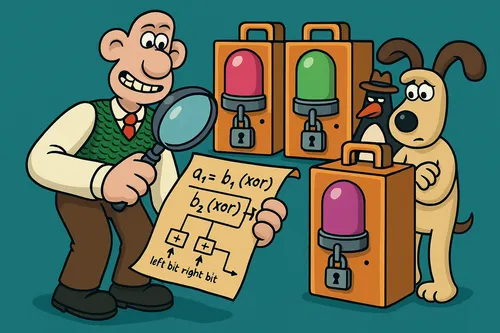
Authentication Protocols 101
Understanding Authentication in Security Protocols
Authentication is a cornerstone of secure communications — but not all authentication guarantees the same thing. In this post, we break down the three primary types:
- ✅ Aliveness
- 🔁 Mutual Communication
- 🔒 Data Agreement
We’ll walk through simple protocol examples, explain what guarantees they provide, and illustrate them with message flowcharts.
📘 Quick Definitions
| Type | What You’re Looking For |
|---|---|
| Aliveness | Did one party receive a fresh response that only the other party could have generated? |
| Mutual Communication | Did both parties actively exchange and verify fresh, identity-bound responses? |
| Data Agreement | Do both parties agree on specific values (e.g., session keys), and know the other agrees too? |
Example 1: Aliveness
Protocol A
1. A → B: A, Na
2. B → A: {Na}KABFlowchart
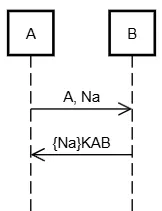
Analysis
- A receives
{Na}encrypted with shared keyKAB. - ✅ A learns B is alive and knows
KAB. - ❌ B doesn’t authenticate A.
Authentication Type: Aliveness (A about B)
Example 2: Mutual Communication
Protocol B
1. A → B: A, Na
2. B → A: {Na, Nb}KAB
3. A → B: {Nb}KABFlowchart
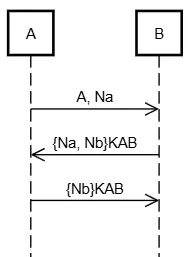
Analysis
- Each party sends and verifies a fresh nonce.
- Both know the other is involved in the session.
Authentication Type: Mutual Communication
Example 3: Data Agreement
Protocol C
1. A → B: A, Na
2. B → A: {Na, Kab}KAB
3. A → B: {Kab}KABFlowchart
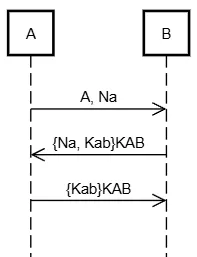
Analysis
- B proposes a new session key
Kab. - A accepts and confirms it.
- ✅ They both agree on
Kaband know the other agrees.
Authentication Type: Data Agreement
Example 4: Replay Attack Vulnerability
Protocol X
1. A → B: A, Na
2. B → A: {Na, Nb}KAB
3. A → B: {Nb}KAB
4. A → B: {Message}KABFlowchart
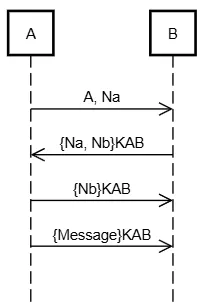
Flaw
- An attacker can replay a full session.
- B has no way to check if the message is fresh.
Fix
3. A → B: {Na, Nb}KAB
4. A → B: {Message, Na, Nb}KABThis binds the final message to the current session.
Summary Table
| Protocol | Authentication |
|---|---|
| Protocol A | Aliveness (A about B) |
| Protocol B | Mutual Communication |
| Protocol C | Data Agreement |
| Protocol X | ❌ Vulnerable to Replay Attack |
Theory Meets Practice: Authentication in Common Protocols
Let’s now tie the theory of aliveness, mutual communication, and data agreement into real-world authentication protocols.
NTLM (Windows Challenge-Response)
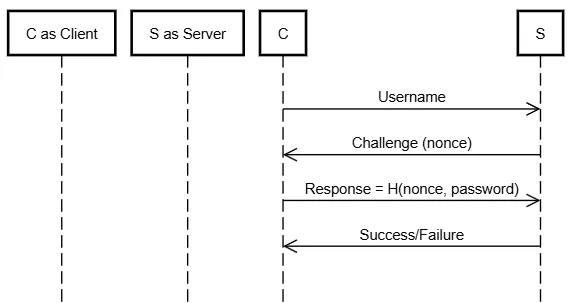
- ✅ Aliveness (Server verifies the client)
- ❌ No mutual communication
- ❌ No data agreement
- ⚠️ Vulnerable to pass-the-hash attacks
Kerberos (Ticket-Based Authentication)

- ✅ Aliveness
- ✅ Mutual Communication
- ✅ Data Agreement (on session key)
- 💡 Used in Active Directory environments
LDAP (Lightweight Directory Access Protocol)
LDAP by itself is a directory lookup protocol. Authentication is often done via:
- Simple Bind (plaintext — insecure unless wrapped in TLS)
- SASL Bind or Kerberos-backed
- ❌ No built-in cryptographic challenge
- ⚠️ Use with LDAPS or external auth
RADIUS (Remote Authentication Dial-In User Service)
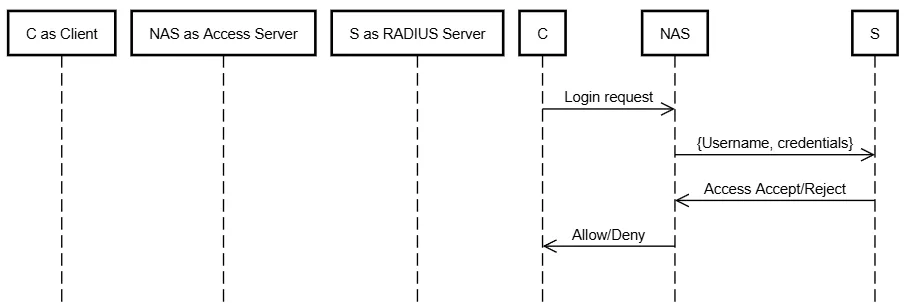
- ✅ Aliveness (of client)
- ❌ No mutual authentication unless extended via EAP
- ⚠️ Use with EAP-TLS or move to TACACS+ for command-level controls
Comparison Table
| Protocol | Aliveness | Mutual | Data Agreement | Notes |
|---|---|---|---|---|
| NTLM | ✅ | ❌ | ❌ | Legacy protocol, pass-the-hash vulnerable |
| Kerberos | ✅ | ✅ | ✅ | Secure ticketing and key agreement |
| LDAP | ❌ | ❌ | ❌ | Needs TLS or Kerberos for security |
| RADIUS | ✅ | ❌ | ❌ | Pair with EAP for stronger auth |
Further Reading & Tools
- RFC 4120 - Kerberos V5
- Wireshark NTLM & Kerberos Filters
- FreeRADIUS Documentation
- Samba NTLM Auth Tools